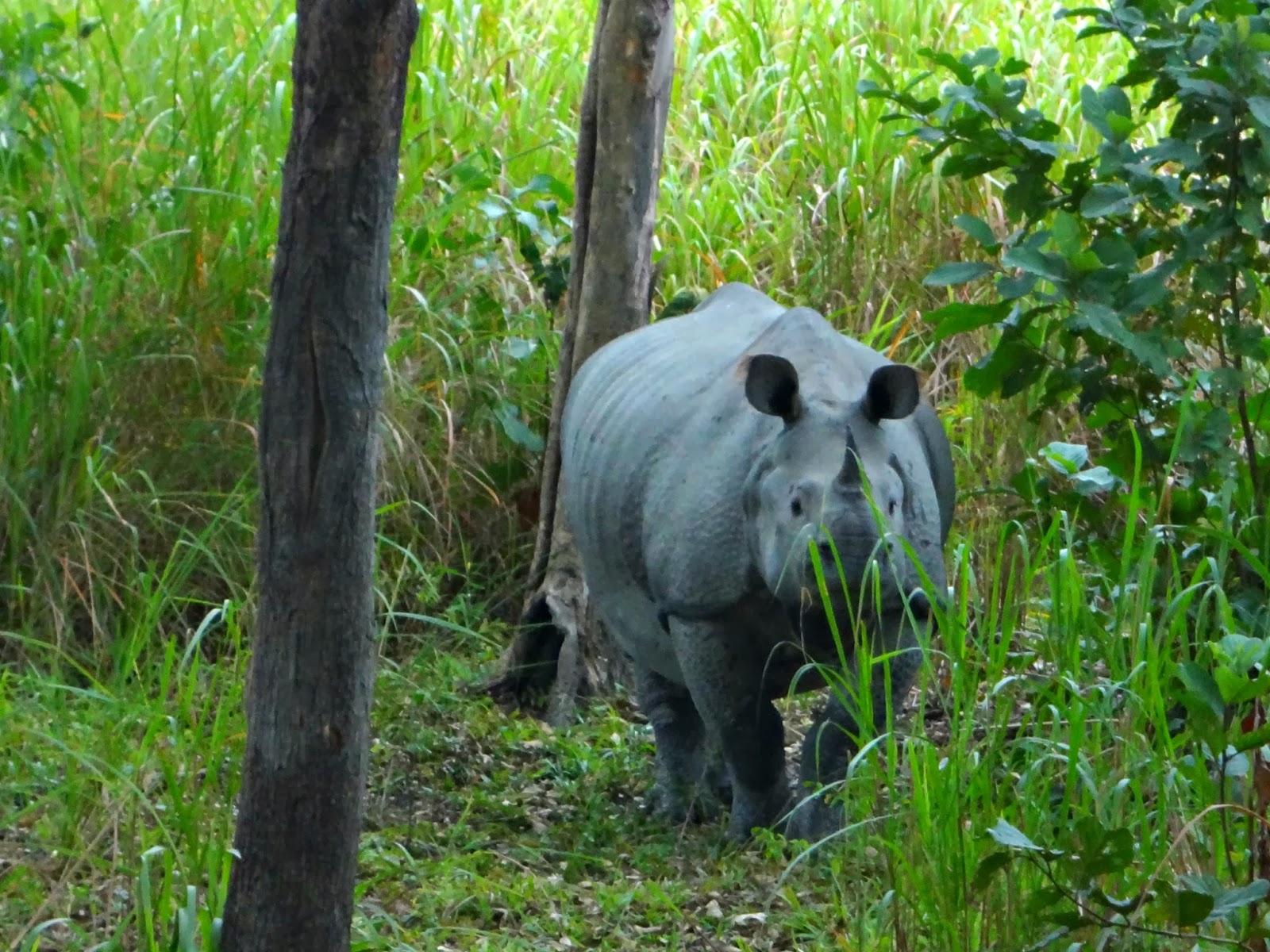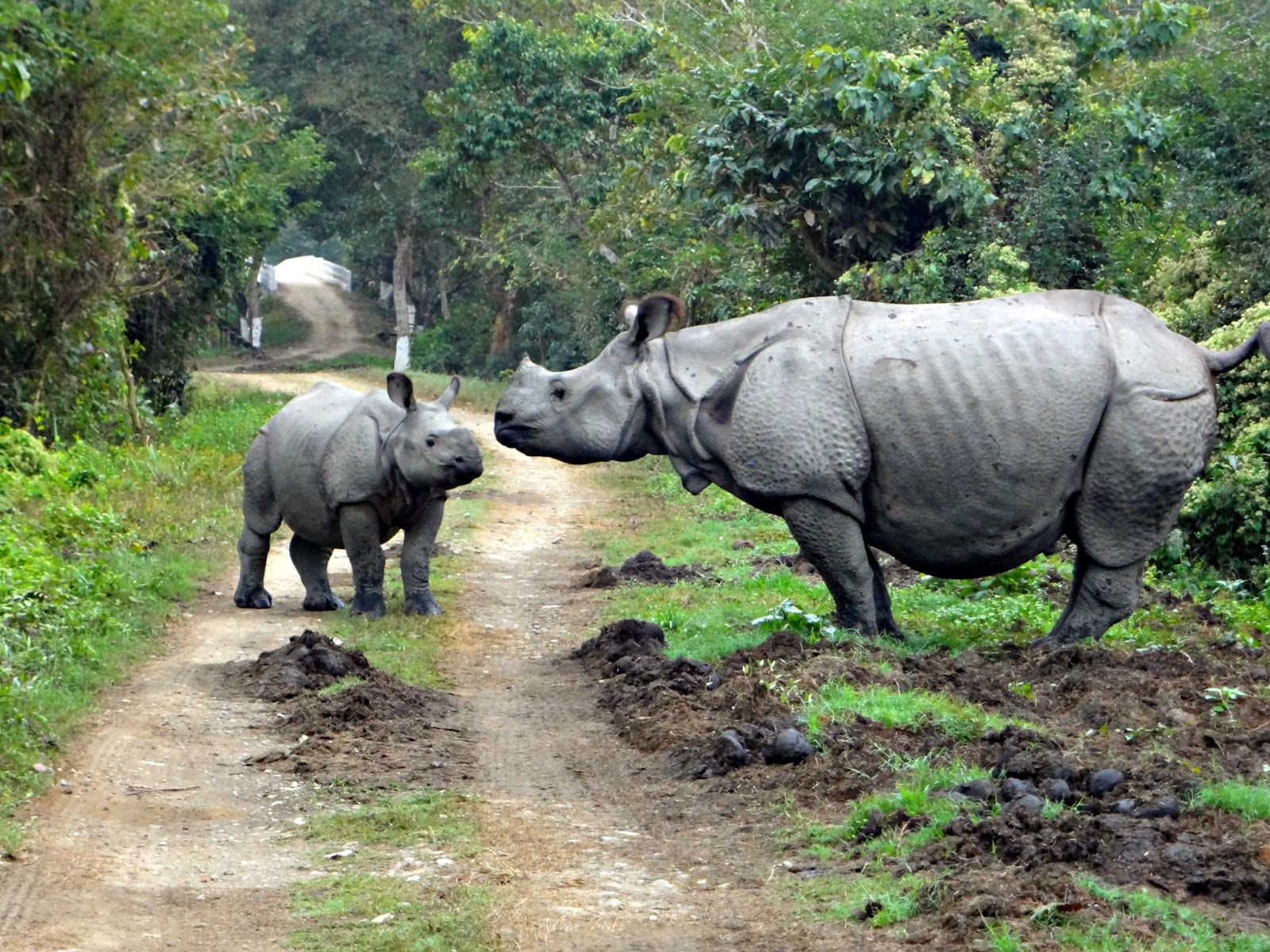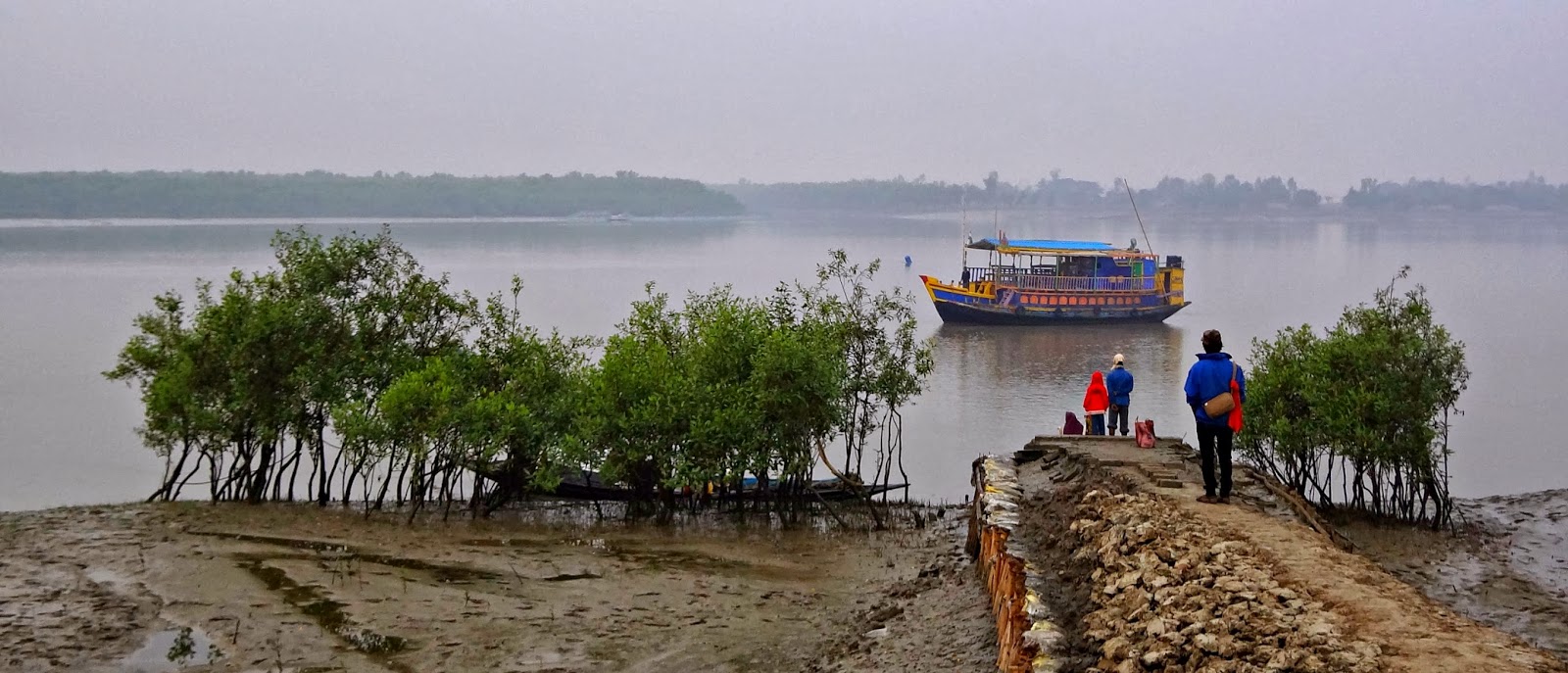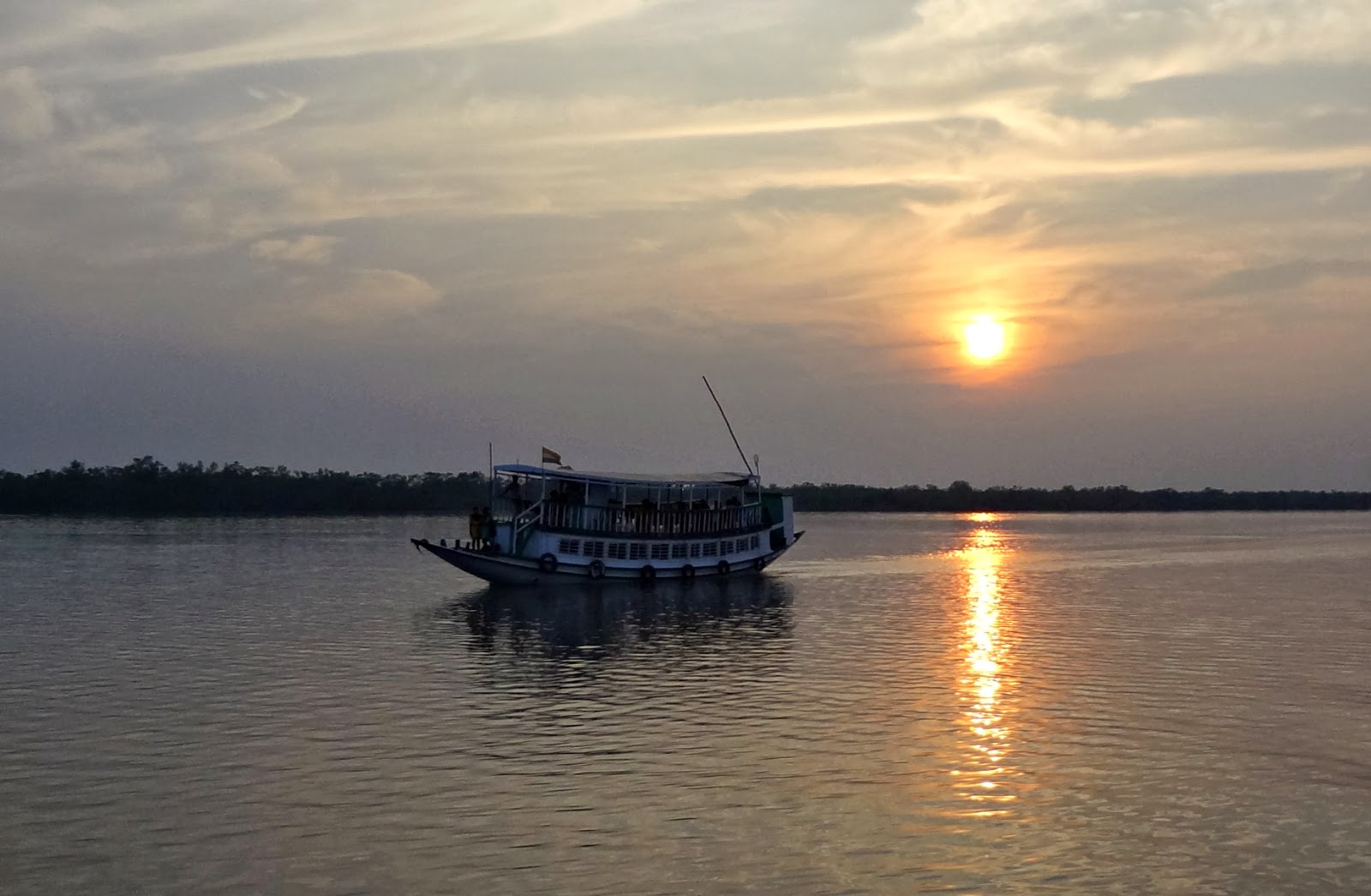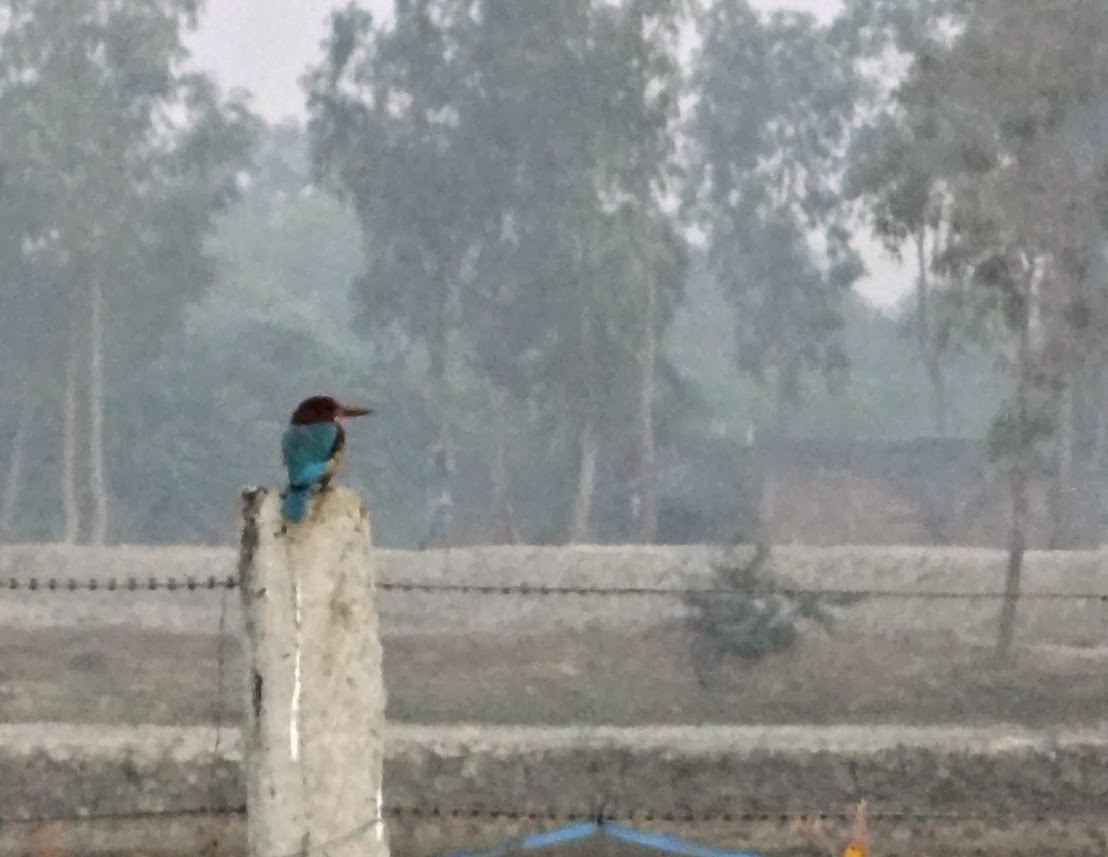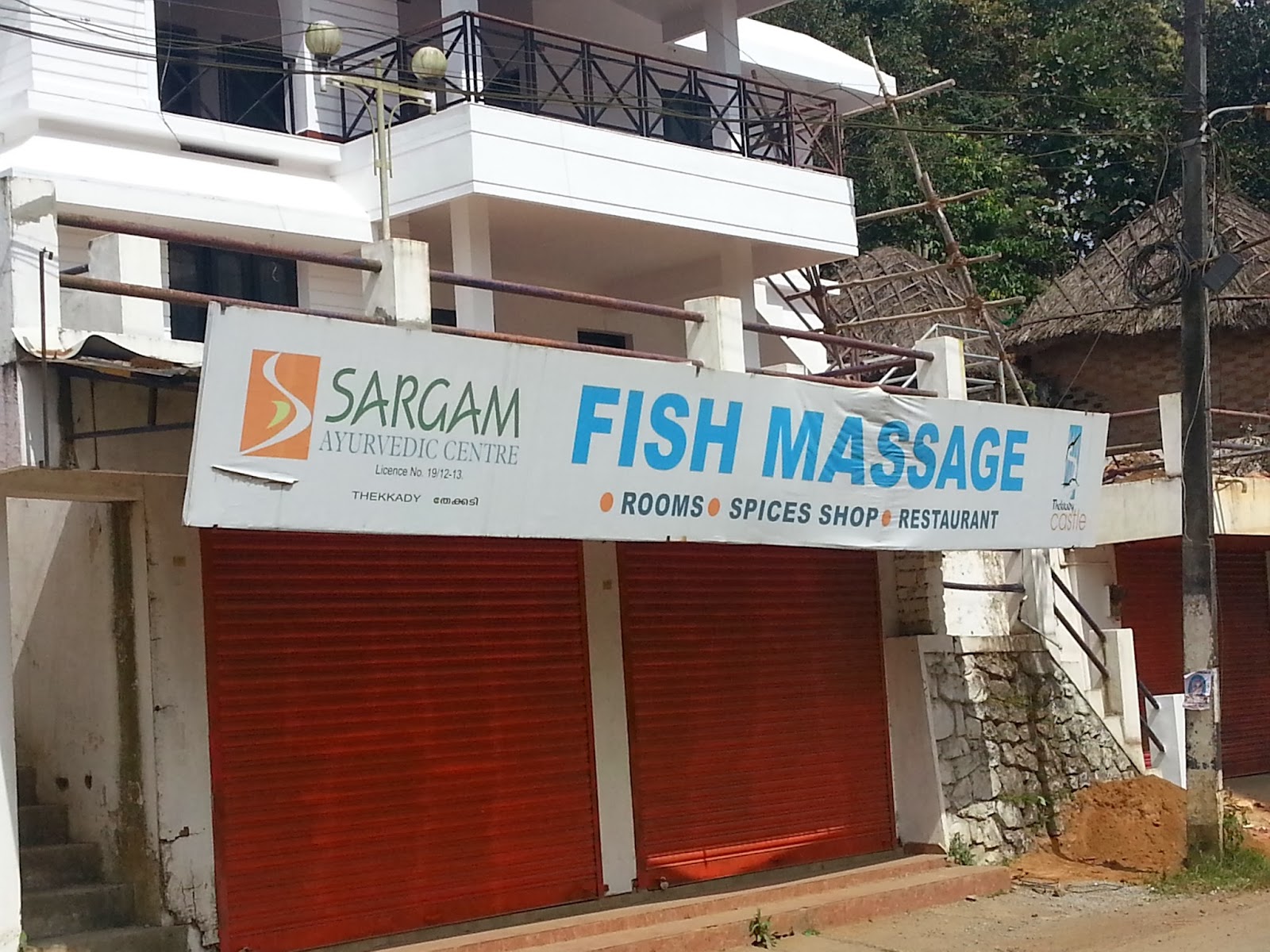I barely know where to begin with a post about Indonesia. I saw incredible wildlife, both on land and underwater, made great friends, and experienced a wonderful and varied culture. I did all this by visiting only five out of thousands of Indonesian islands. I would follow the rule “when in doubt, begin at the beginning”, but that’s just so
boring. So instead, I’ll start with Christmas Eve, which serves as a perfect snapshot of my time in Indonesia.
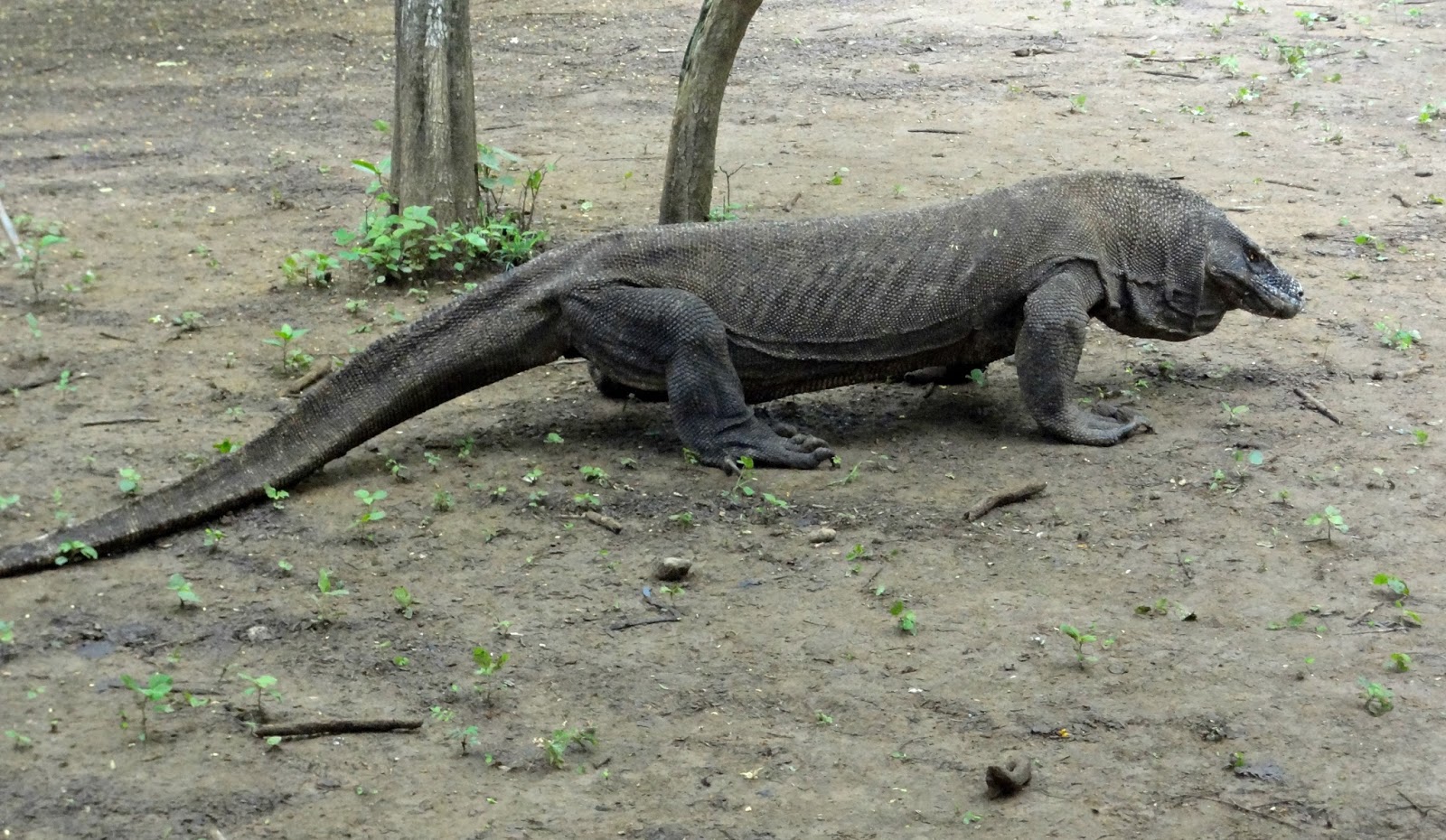 |
| A very slow, very grumpy, prehistoric beast |
 |
| Mantas! Be prepared for a lot of manta photos, because I love them and I saw a lot of them |
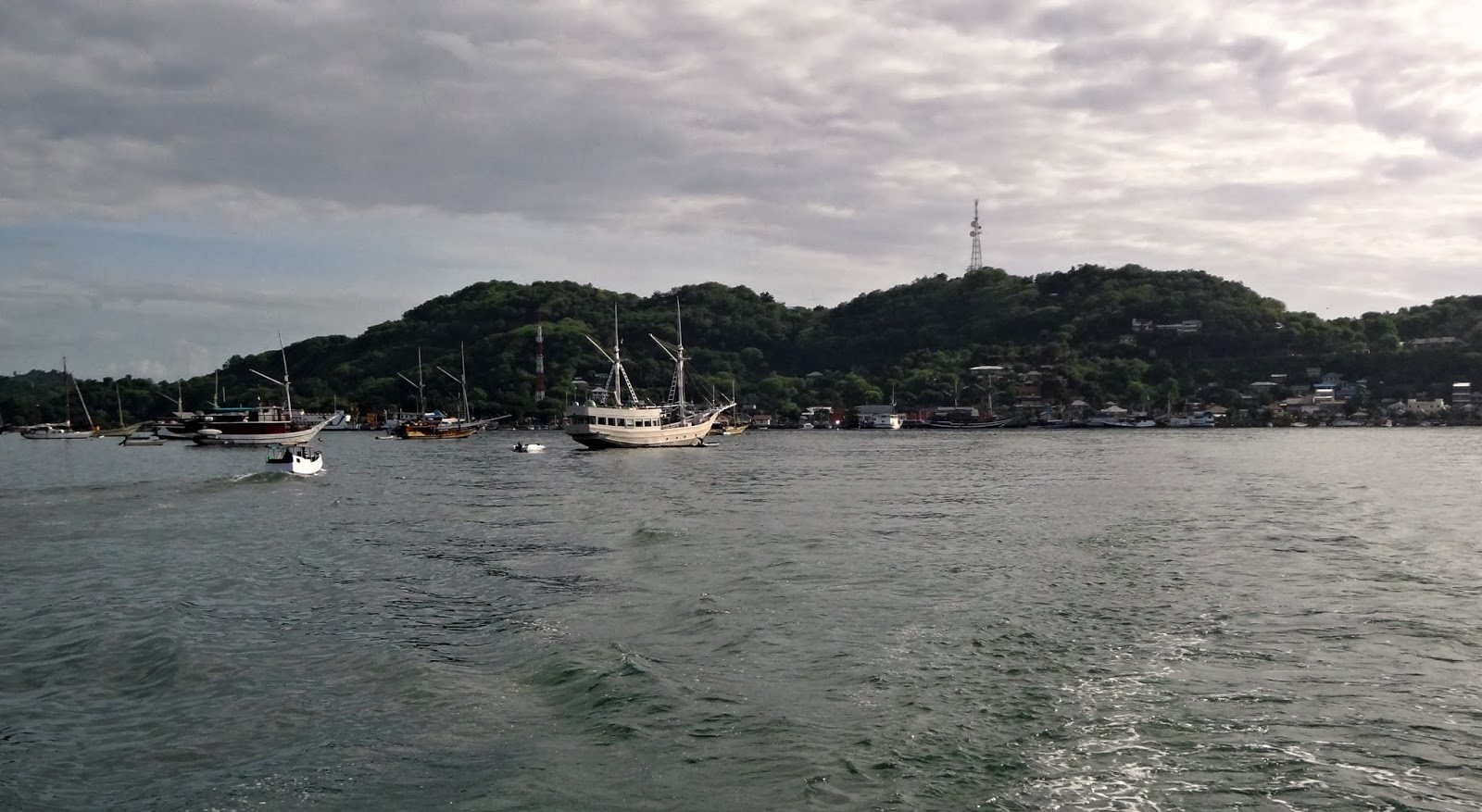 |
| Labuanbajo harbor, looking back from the way out to Komodo |
I started Christmas Eve by rolling out of my $4.50/night bed in the shared room above the dive shop and walking downstairs to meet the other divers - all 4 of them - before walking 10 minutes down the main street in Labuanbajo, on Flores Island. After an hour-and-a-half boat trip through beautiful green islands and clear blue water, we had two spectacular dives in Komodo National Park where we saw manta rays, sharks, octopus, huge schools of fish, dolphins, and some of the healthiest coral reefs in the world. My dive buddies were from the UK (living in Singapore), Argentina (living in London), Germany, and my guide was Indonesian. That evening, I went out for drinks and snacks with the Italian dive shop owners before going to listen to Catholic mass given in Bahasa Indonesian at an overflowing cathedral in the rain. The day finally wrapped up with a delicious cheeseburger - my first in months - with locals and guests from six different countries. My entire time in Indonesia felt like this one day: adventurous, laid-back, unexpected, refreshing, and all-around enjoyable.
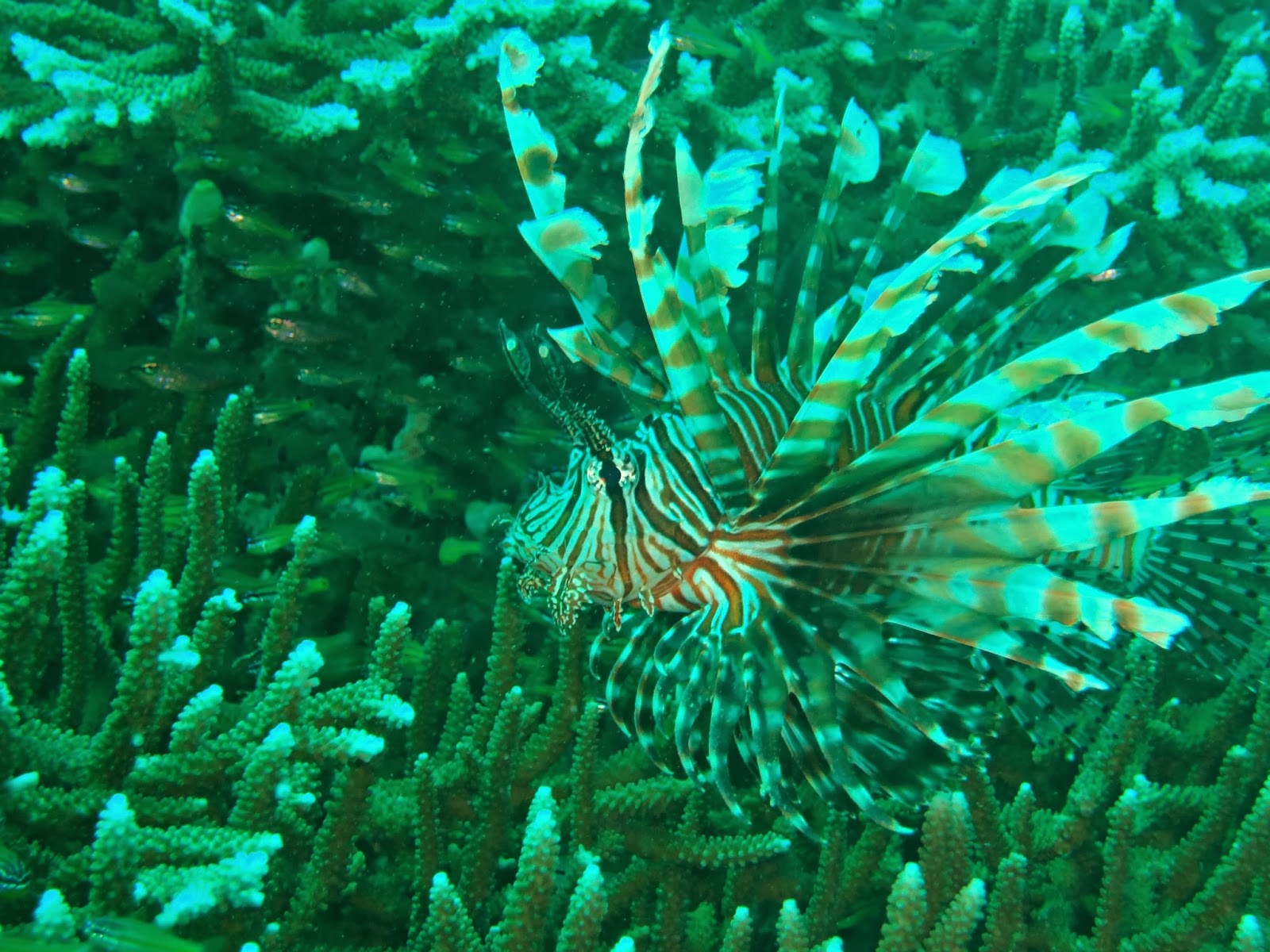 |
| Lionfish |
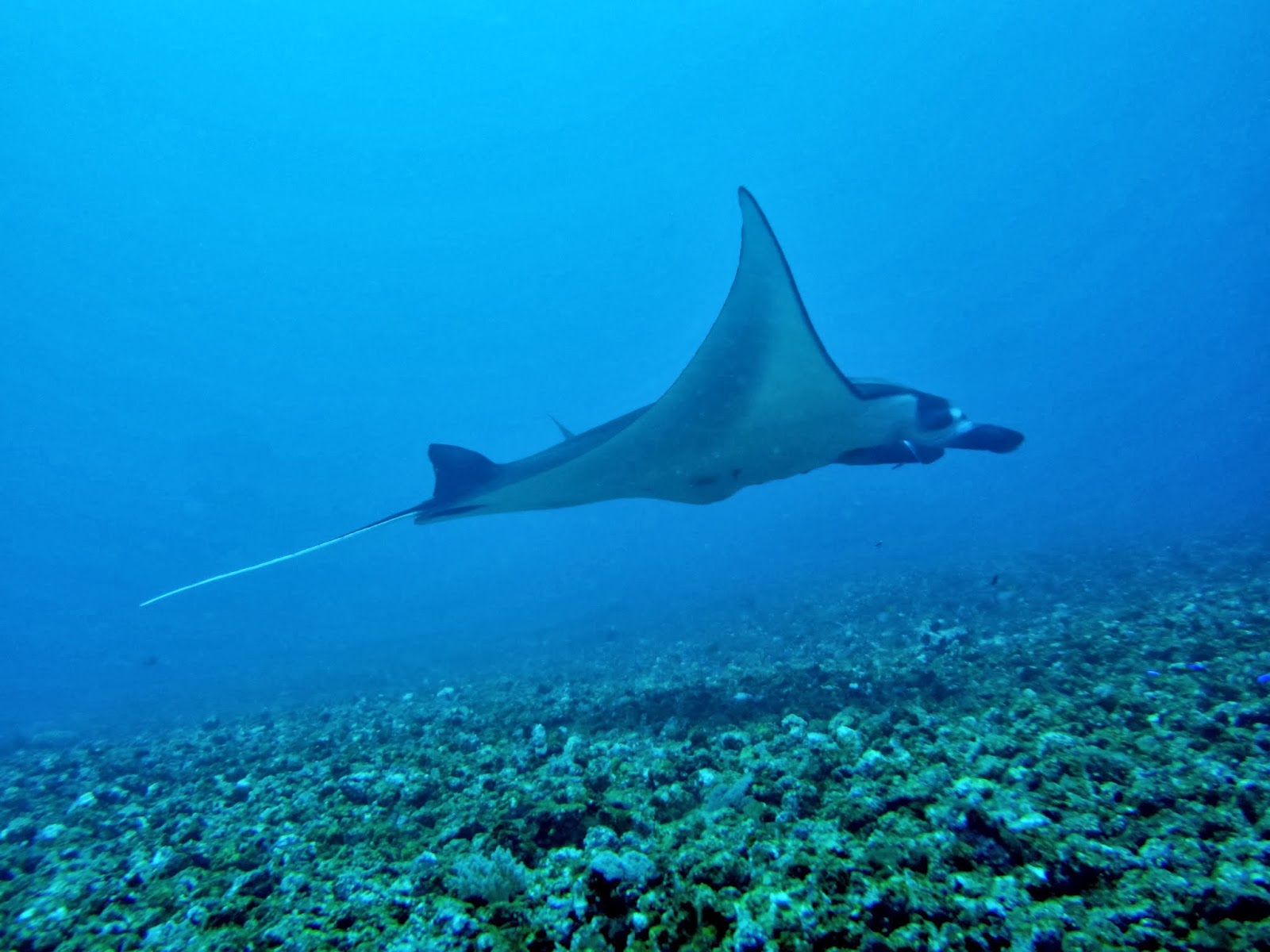 |
| Just look at that! Isn't it beautiful? |
 |
| One of the toughest photos I've ever tried to take. The crab is about 2 inches long and trying to hide on a moving anemone, while I was being pushed around by the current. Not a perfect photo, but I'm still proud of it |
My reason for going to Indonesia, as I've mentioned before, was to see Komodo dragons on their home turf, which is pretty funny considering that activity only occupied about 3 hours out of 15 days. Seeing the dragons was still a high point, but it certainly wasn't the most memorable portion of the trip; the dragons are impressive and slightly unnerving to see up close (especially when you don’t notice them along the path), but I think the people I met and the dives I did will stick with me for far longer.
 |
| They don't look all that threatening until you see one coming toward you while you're kneeling down. Then they look pretty scary |
 |
| Fish cleaning the manta's belly, just like a manta day spa |
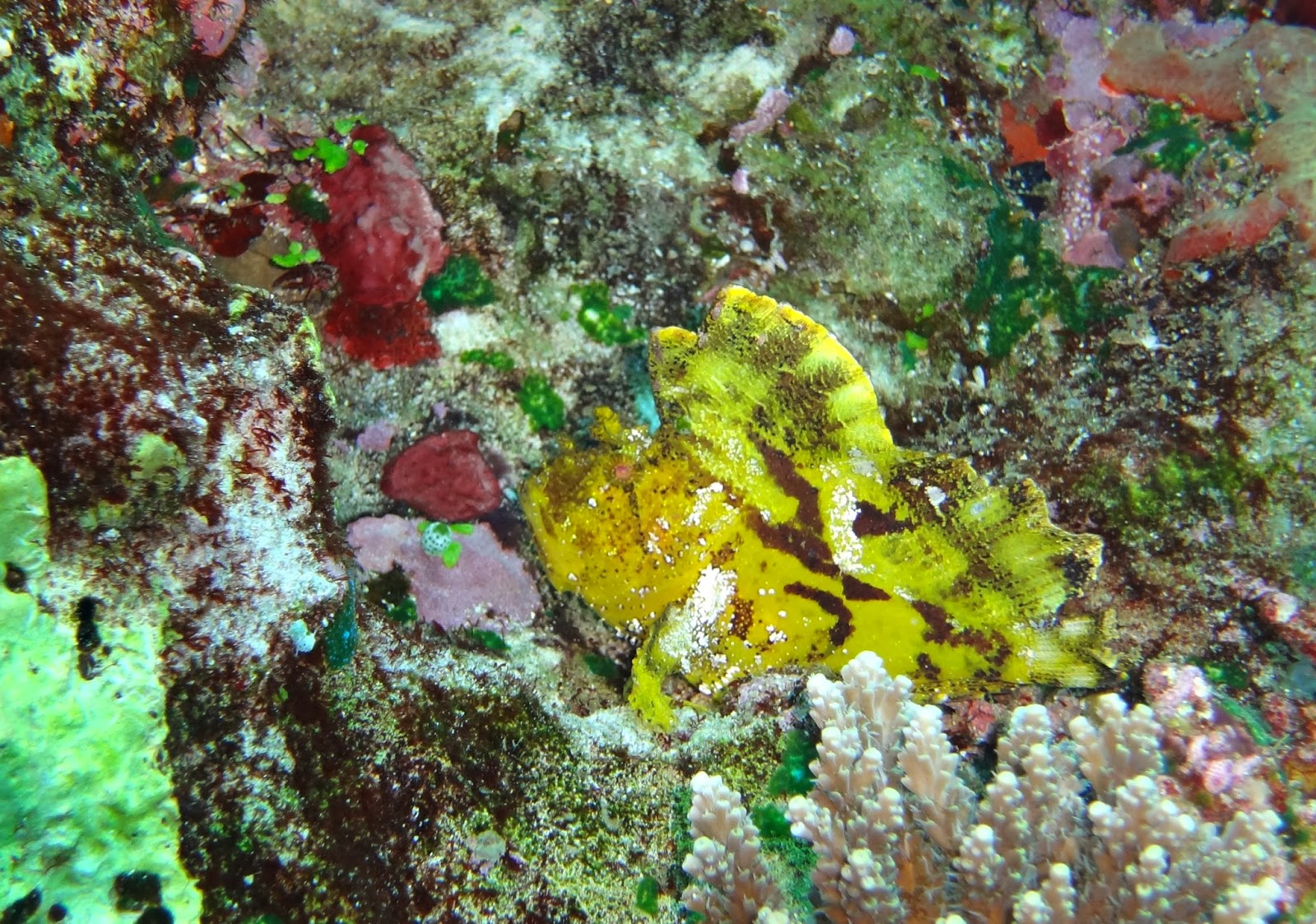 |
| Can you find the leaf fish? Here's a hint: it's the yellow blob |
Although I entered and left the country via Bali, I don’t really have much to say about that island. I only stayed for a couple of days there total, and didn't really get out of the more developed areas, which have lost most of the “local charm” at the expense of all the tourists that go there. Moving east, I took the slow ferry to Lombok, next door to Bali, which was much more enjoyable and scenic, although they too are pushing very hard to increase tourism there. As I've said about buses and trains, the slow ferries are a great way to see how the locals get around on islands and take the time to enjoy the ride. It was funny to see how hard I was being sold the tourist fast ferries, at double the cost of the slow ferry, and how puzzled the local tour agents were that I wasn't interested in how fast and comfortable the speedboats were. Instead, I got to relax on deck, people-watch, and listen to The Pogues “Fairytale of New York”, which showed up on my Spotify playlist unexpectedly and was a good reminder that Christmas was later that week, and that somewhere in the world it was snowing and freezing cold - things like that make me appreciate my travels just that much more.
 |
| 2 dragons sleeping outside park ranger quarters. Apparently, a few months before, a dragon "wandered into" a park office and bit two rangers. Not a place to let your guard down |
 |
| One of the more colorful nudibranches (sea slugs) in Komodo |
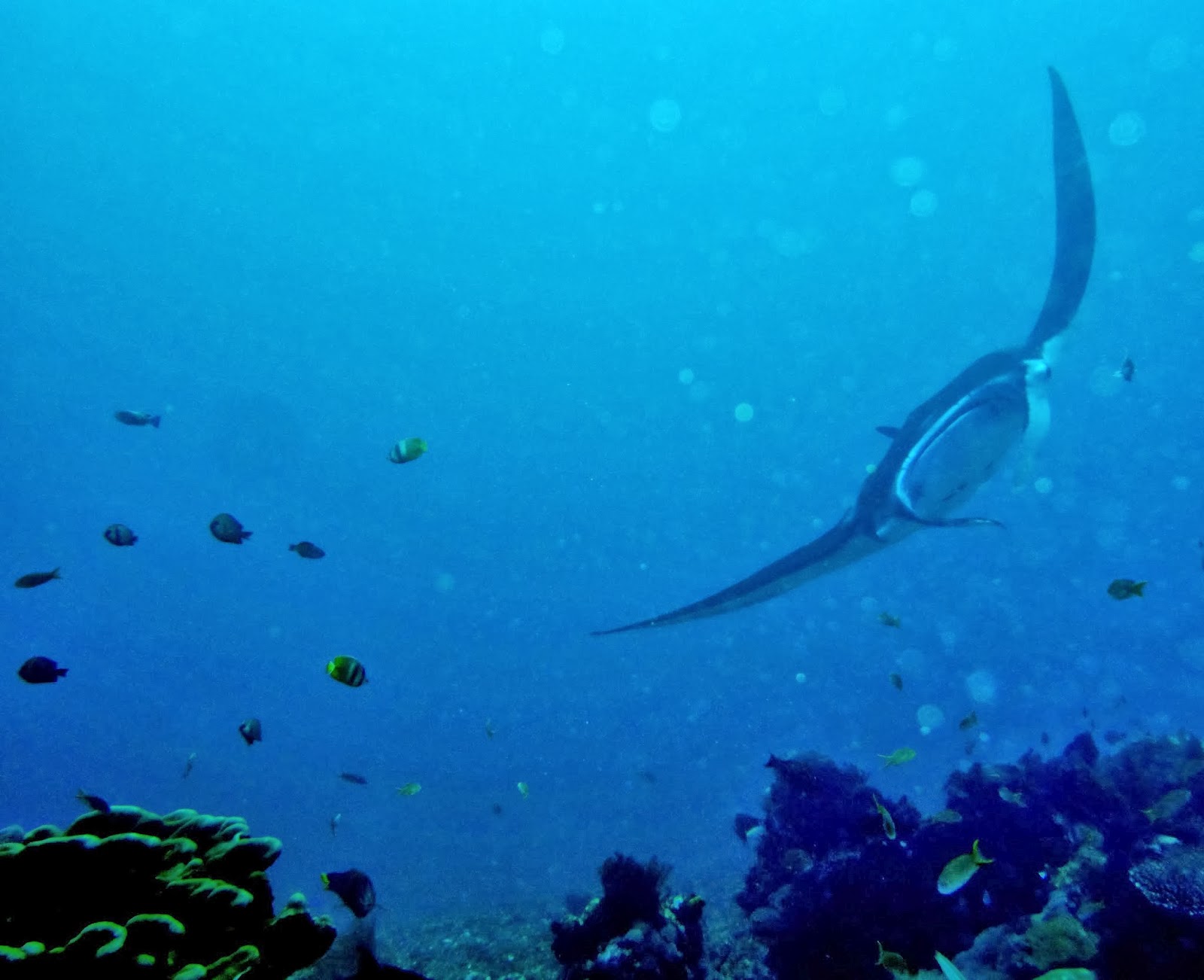 |
| UFO! |
I was heading to Lombok to pick up the tour boat that would eventually take me through the Komodo National Park to my final destination on Flores Island. This is a good point to say that travel within and between islands is widely available in Indonesia, but it’s rarely quick or easy. Most of the islands have an airport or two, but beyond that, you’re likely to be on a ferry or bus or both for many, many, many hours to get between towns. For example, the cheap option to get between Flores and the Bali airport was a 30+ hour ferry-bus-ferry-bus-ferry-bus trip that would only cost you about $20, if you could stand it. That’s why I was happy to find the Perama tour, a combination ferry and tour that took a leisurely 3 days to cruise between Lombok and Flores, with occasionally stops for snorkeling, fresh meals prepared on board, a private bunk, and a morning hike on Komodo Island to see the dragons. What made the trip especially nice was how many people on the tour who stayed on Flores, which provided a nice social transition from one place to the next. Also nice was the smooth cruising weather we had and the beautiful beaches we stopped on.
 |
| Another photo I'm pretty proud of, given the equipment - a transparent shrimp less than an inch long, on an anemone |
 |
| A ray, trying to ignore all the noisy divers around it |
 |
| Getting friendly with the mantas |
I made it to see the Komodo dragons on two occasions, once on the Perama tour and once as part my dive day, and they are incredible animals to see up close. First off, this isn't one of those places that you hunt all over the park hoping you'll be able to spot a glimpse of the animals (like a tiger). The dragons are all over the visitor's center grounds, sleeping under the buildings, walking around the trails, and just generally reminding you to pay attention to your surroundings. They aren't particularly threatening, but they are big and territorial, and I don't think they would hesitate to take a bite at you just as a defense. The problem is that their mouths are so full of bacteria that a simple bite can kill you if you don't get a full antibiotic treatment (available on another island) soon after. To see so many of them laying around the park headquarters was a little funny, until you see them get up and walk around, which is when you suddenly realize you're looking at an 8-foot long lizard that makes you think of dinosaurs, and could probably move a lot quicker than you think it could, and it starts to get a little unnerving. However, with a couple of rangers at the front and rear of the group, you also can relax enough to notice that the Komodo Islands are truly beautiful places and worth seeing on their own.
 |
| I hope no one needs that antiperspirant back, because I am not going to get it for them |
 |
| The intro to a traditional Indonesian fighting dance. Our tour stopped at a local festival on Lombok and they basically put the whole event on hold so our group could see some local theater before we had to leave |
 |
| Rinca Island, the smaller of the two main islands in Komodo National Park |
As good as it was to see the dragons and see another major animal on my checklist, the attractions under water were just as impressive. Komodo is also a marine protected area and the coral reefs around the islands are simply stunning. It is a toss up if the reefs in Borneo were healthier, but both places had forests of coral, huge schools of reef fish, and some incredible marine life. My favorite site was Manta Point (surprise!), which we went to three times, and each time it just got better and better, with mantas making circling passes at cleaning stations, buzzing by the divers, and swimming in big barrel rolls as they fed on the plankton. If air wasn't an issue, I could watch them swim for hours, and it's amazing to see how graceful they are and how they can hang almost motionless in a strong current, or move around the reef with barely a twitch of their wings. And when there weren't mantas around, there were tiny fish, eels, shrimp, and nudibranches to keep my interest until the next big ray appeared.
 |
| The dance fighting performance, which seemed to involve a lot more serious fighting than I would have guessed. There was a serious chance of injury if one of the fighters stepped into a blow, but luckily they seemed to know what they were doing |
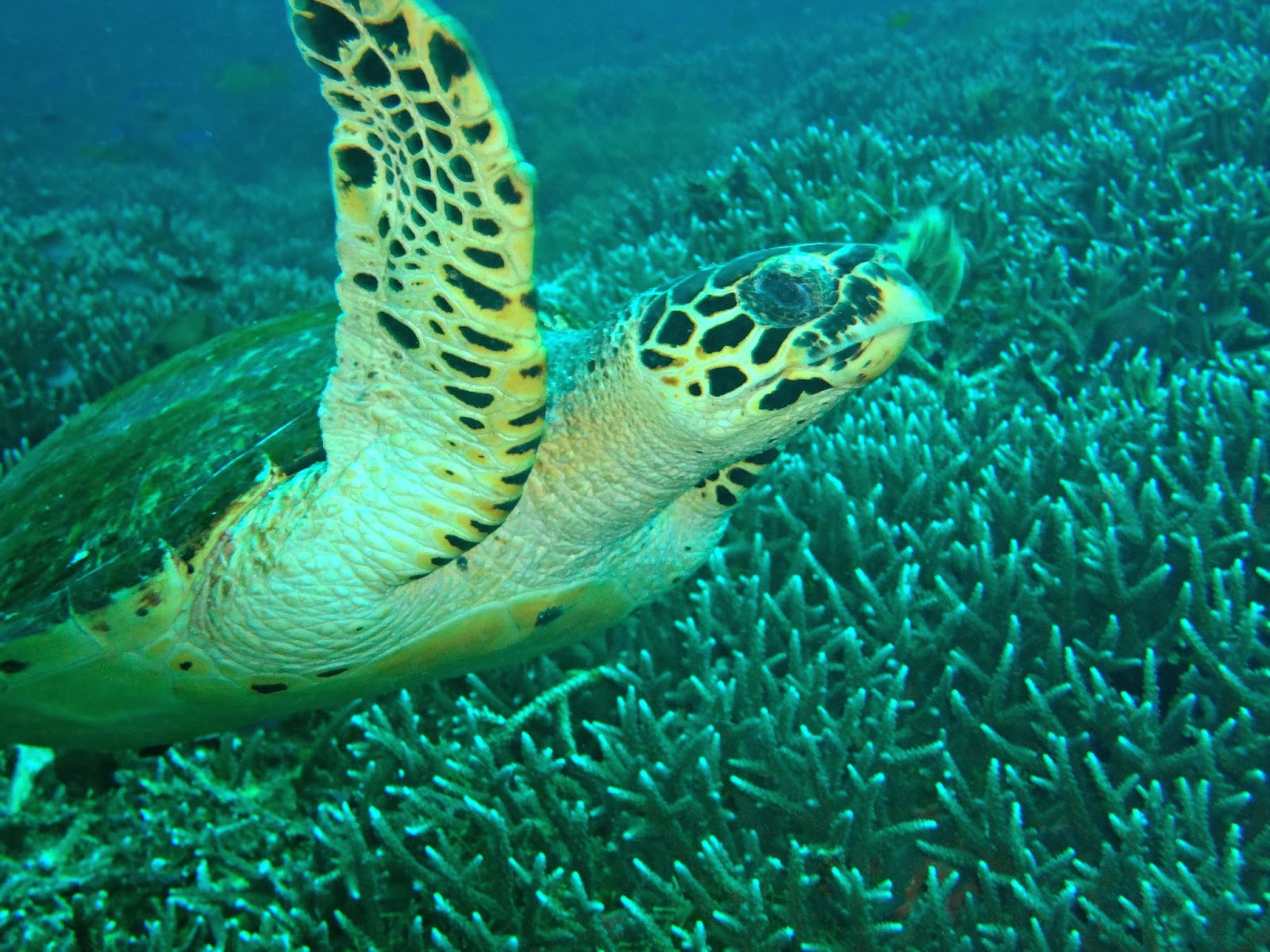 |
| Up close with a turtle on the reef |
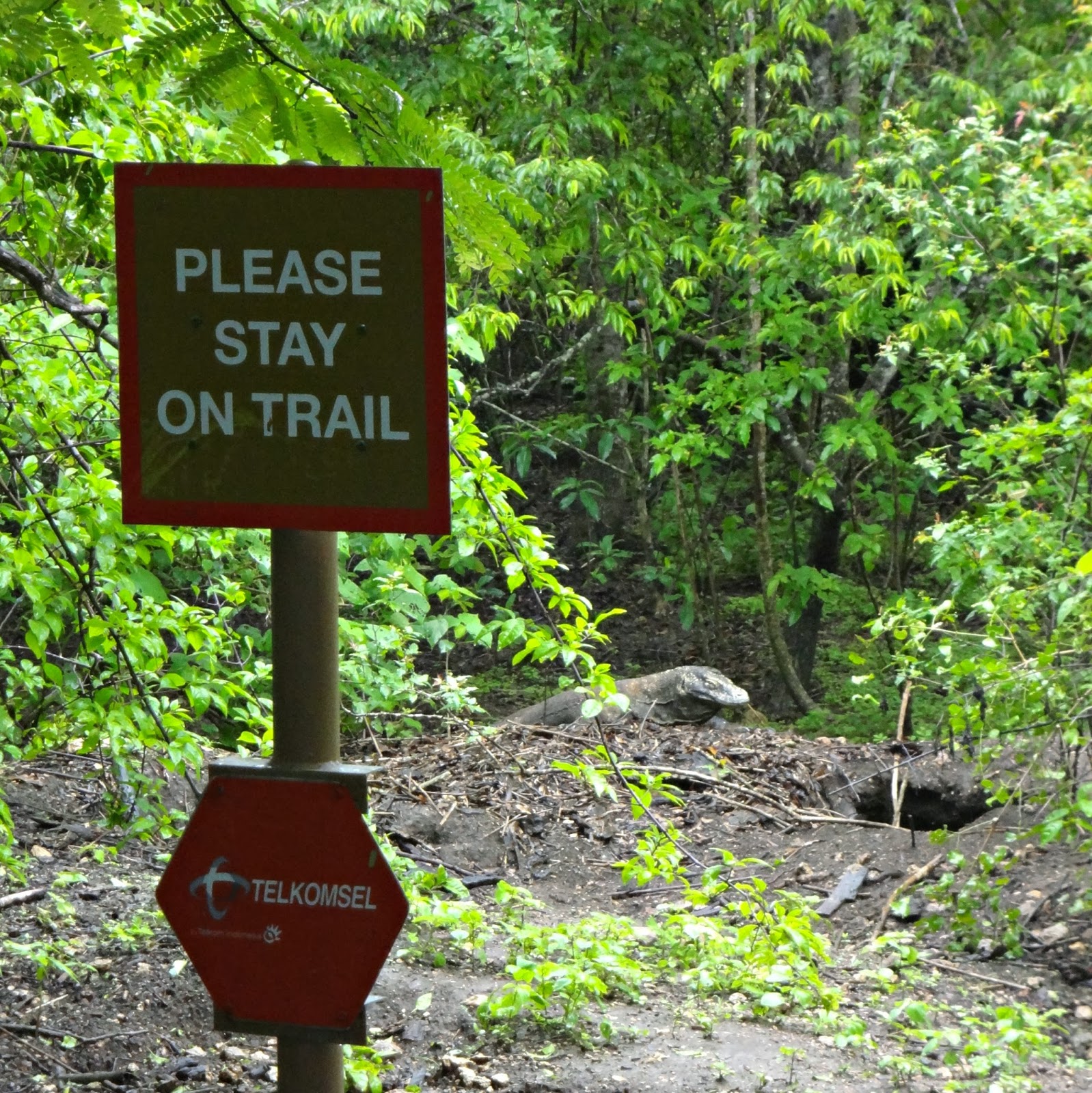 |
| Good advice, considering that dragon is sitting on her nest |
I ended up staying much longer than I originally planned in Labuanbajo, partly because the diving was so great, partly because it was so inexpensive and laid-back, but mostly because the people I met there were so friendly and fun. During a trip where I have spent large chunks of time traveling by myself, Indonesia was remarkable because I had about two solid weeks of social diving, dining, and exploring with a great group of people from all over the world, and it made all the experiences I had come for, like seeing the dragons and the reefs, all the better because I got to share them. So, needless to say, I was a little grumpy for a few days after leaving because I wanted to keep that vibe going, which is pretty tough to do when everyone I met (as well as myself) was getting on intercontinental flights in all directions. However, I'm happy to say that I got over my moping, got excited about seeing Australia, and met a whole new group of awesome people down under. Apparently, as I'm discovering, the world is just full of interesting people, and I'm looking forward to meeting them all!
 |
| My only picture (so far) of an octopus on the reef! |
 |
| Traffic jam at the cleaning station |
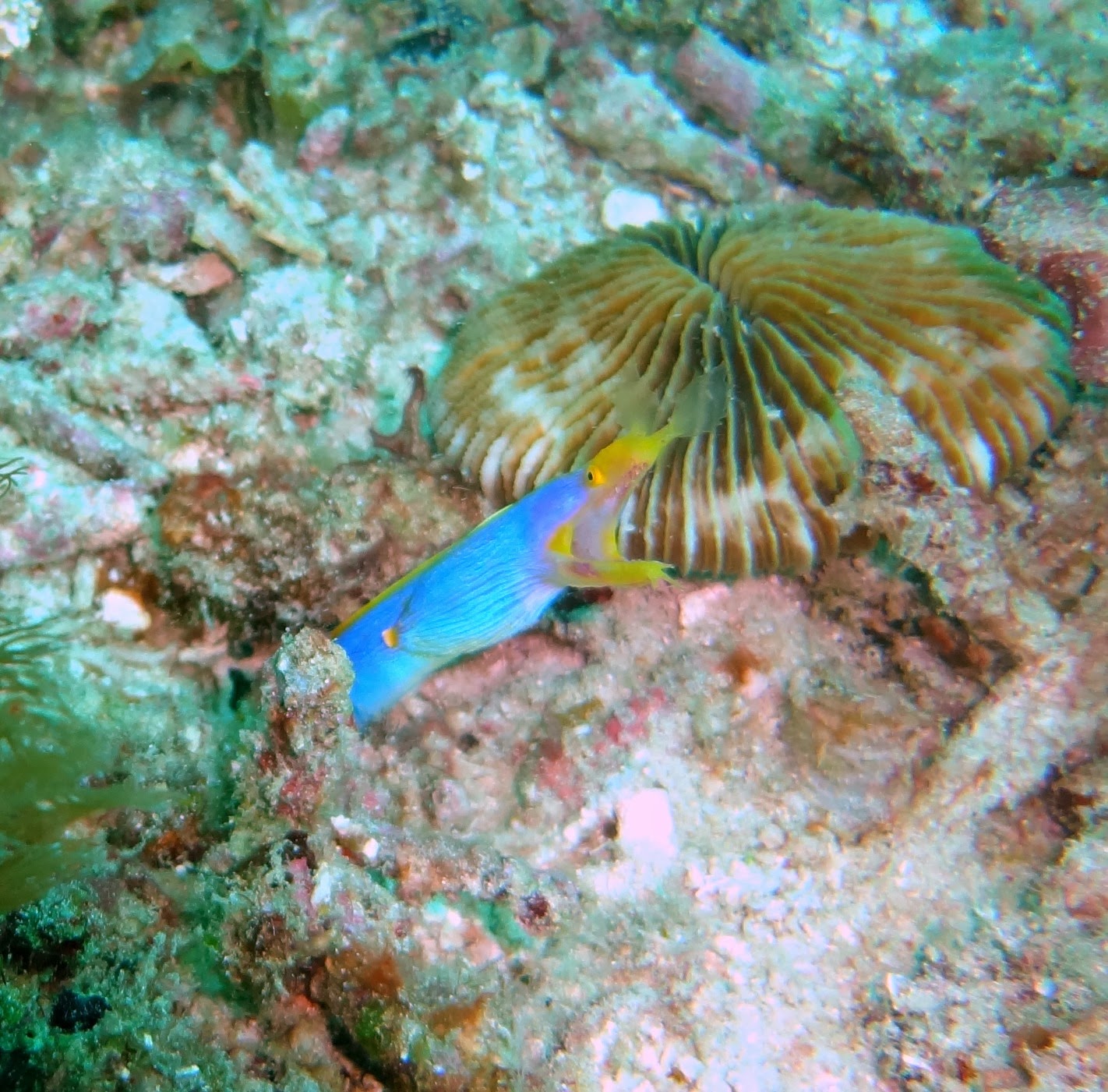 |
| Also from Manta Point, a ribbon eel. They try to look fierce, but they are only about a foot long, and they have these ridiculous nose flaps that make them very hard to take seriously |
OK, that was all I had to say about my time in Indonesia, but I still have a lot more pictures, so I guess I will post those separately in a couple of days so you don't get manta overdose. Also, I did manage to take some video footage of a few dolphins that showed up on a dive and I've uploaded it to YouTube (http://www.youtube.com/watch?v=-eI27dShlRk). Just a minute long and a little shaky, but proof that I've been diving with dolphins! I told you it was an incredible place.



























